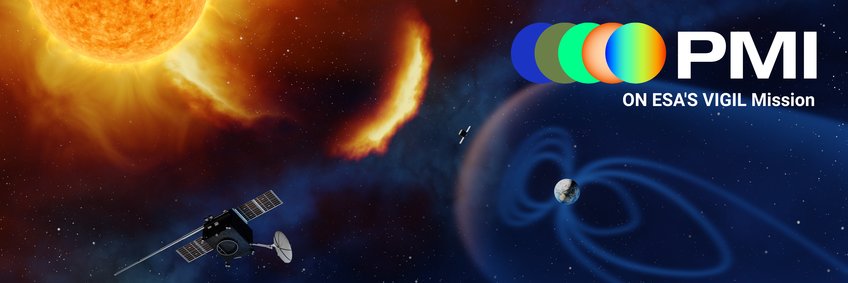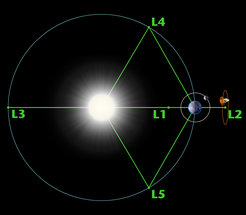
PMI: The “Photospheric Magnetic field Imager” for ESA’s Vigil mission
The Photospheric Magnetic field Imager (PMI) is a compact and lightweight vector magnetograph tailored for the use on deep space missions. It strongly builds on the expertise gained in developing the Solar Orbiter PHI instrument. PMI has been proposed and adopted as one of the key instruments for ESA’s Vigil mission.
The Vigil mission

Vigil is an operational mission, which is part of ESA‘s Space Safety programme and is devoted to space weather. Being positioned at the Lagrange point L5 at an equal distance from the Sun as from Earth, Vigil will provide a constant stream of observational data of the Sun and thus enable a substantial increase to the pre-warning time in case of severe space weather events.
The unique orbital position, the continuous 24/7 stream of data (nominal cadence: 30min), and the additional telemetry for scientific data products makes the mission scientifically interesting for both solar departments at MPS. Co-observations with magnetographs at L1 / Earth will greatly increase the observational coverage of the Sun and help resolve the 180° ambiguity, inherent in the transverse component of the magnetic field deduced from the Zeeman effect. It will increase the SNR for helioseismology and improve measurement of the Sun’s far-side through helioseismic holography.

The PMI Instrument
Similar to the Solar Orbiter PHI instrument, PMI will provide vector maps of the photospheric magnetic field. In accordance with the operational character of the VIGIL mission, emphasis is put on the development of a reliable low latency on-board processing pipeline.
The instrument acquires raw data set, comprising ~380 individual images with a cadence of up to 1 to 2 min. To cope with the limited telemetry available for deep space missions, the physical quantities (data products) are derived on board, achieving a total data compression factor of about 30.

Exemplary PMI data products after on-board analysis from left to right: continuum intensity, magnetic field strength, magnetic field inclination, magnetic field azimuth and line-of-sight velocity.


